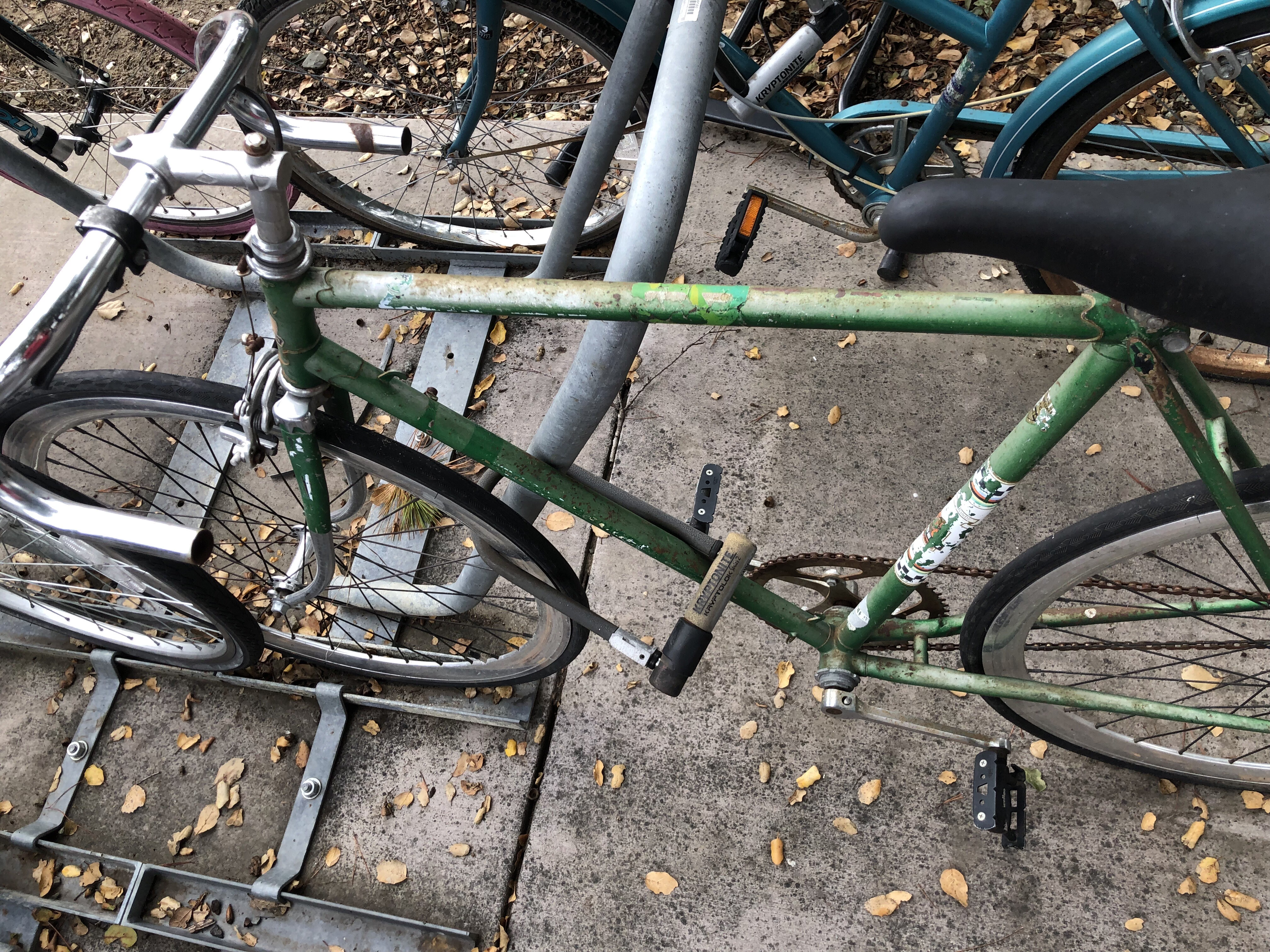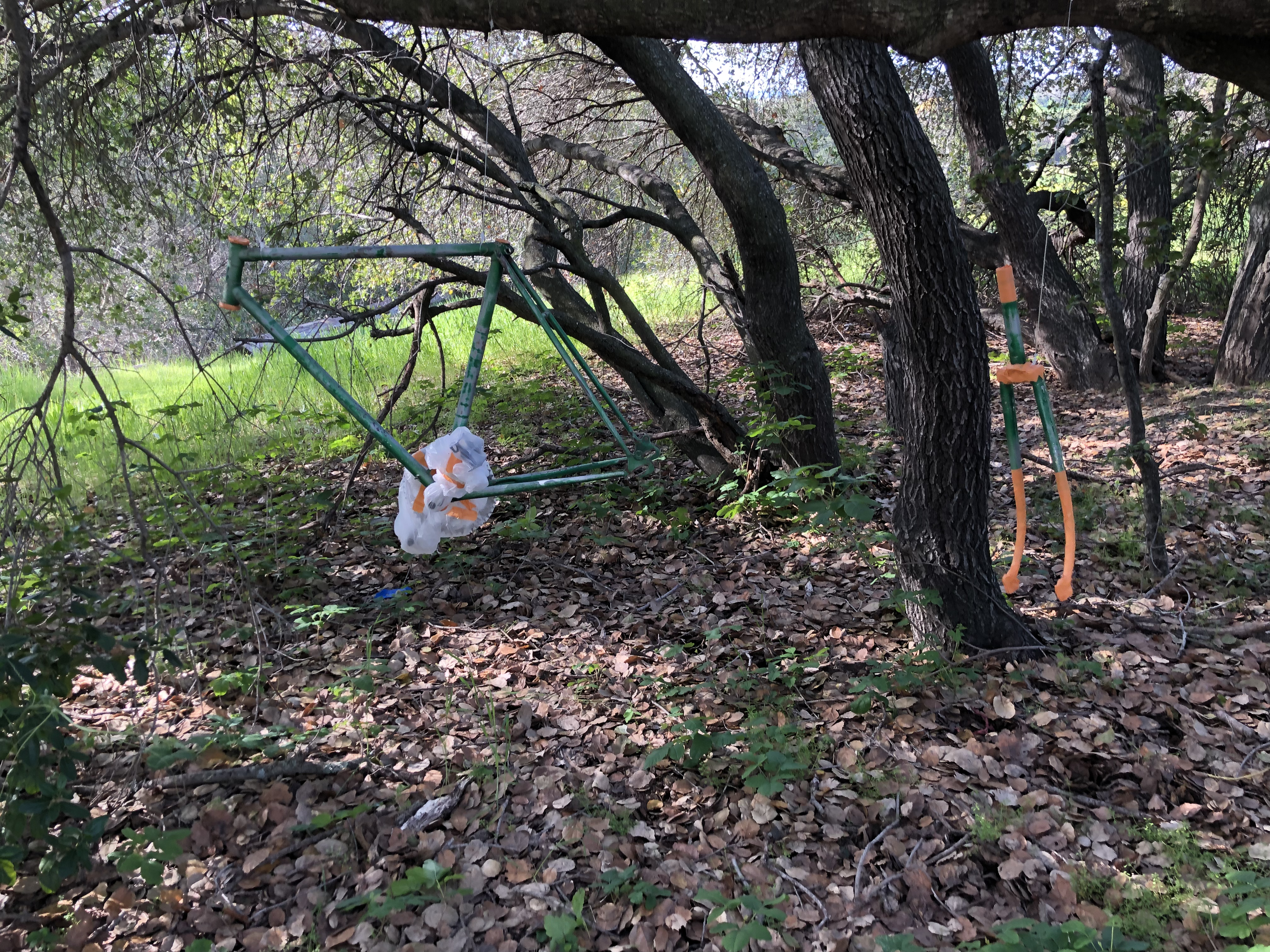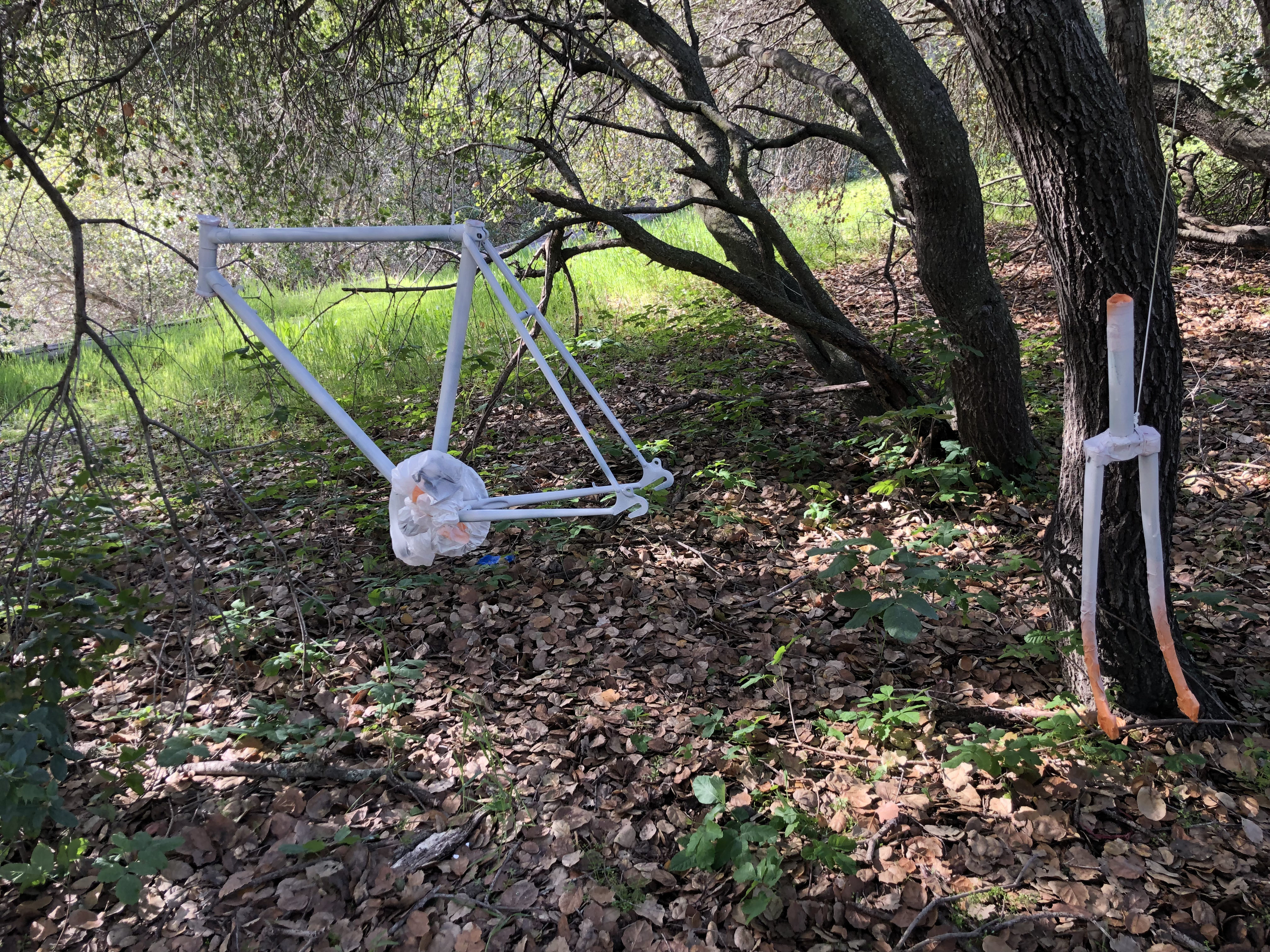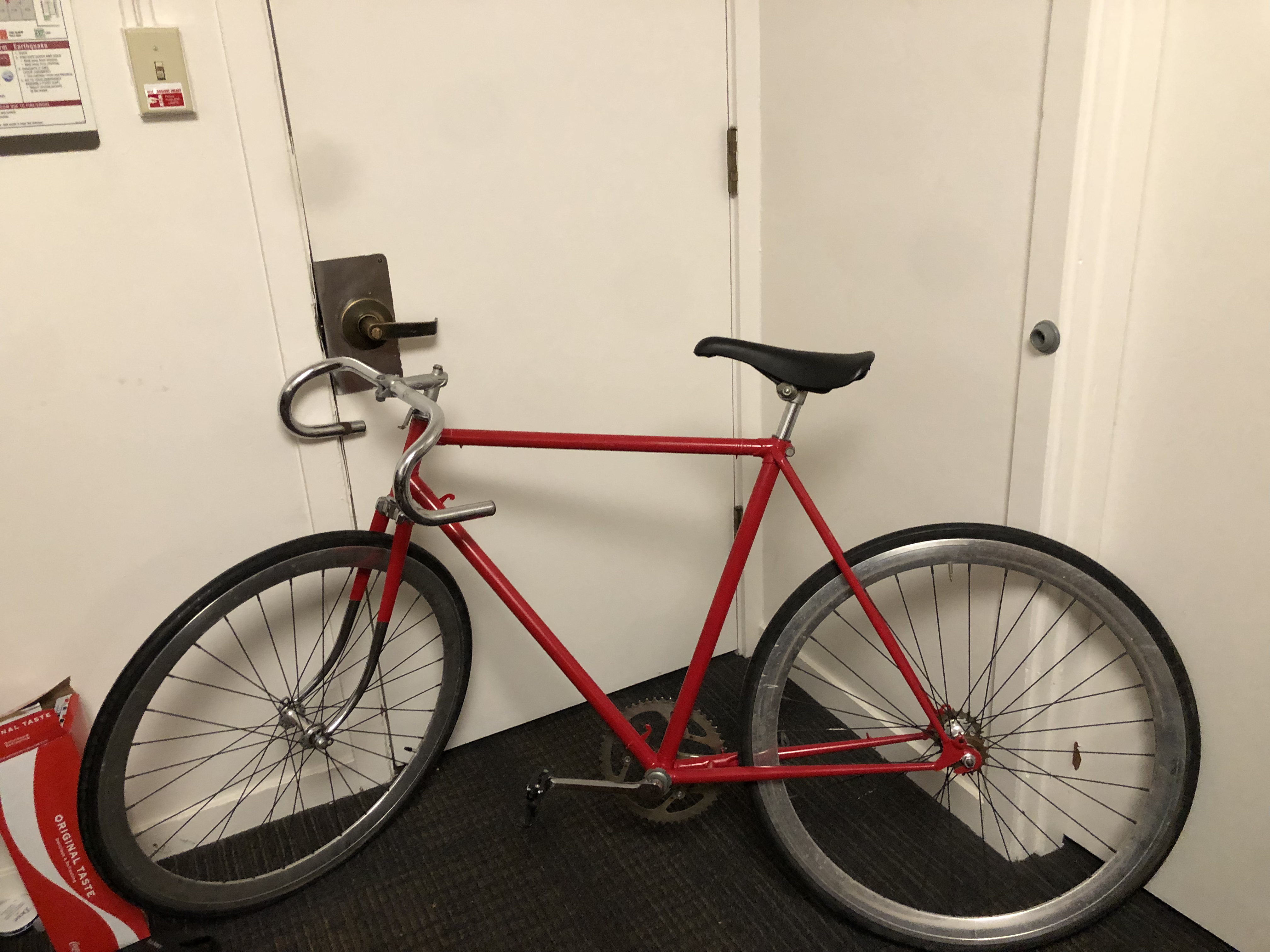Introduction
I recently decided to restore an old Peugeot bike. I wanted to have a nice fixed gear bike to ride and learn more about how bikes work.
 The bike before restoration.
The bike before restoration.
In this blog post, I’ll talk about the process for disassembling the bike, repainting the frame, and assembling it again. I’ll also talk about some mistakes I made and lessons I learned that could be useful for someone attempting a similar project.
Process
In order to repaint the frame, I first needed to strip the bike down to the frame. This proved to be a bit challenging since the bike was rusted over and in general was in a rough condition. However, after talking to some people at a local bike shop that were very knowledgable about bikes, I was able to disassemble everything except the cranks. This is because the cranks were attached using cotter pins and I didn’t have the correct tools to remove them. The only tools I used to disassemble the bike were some wrenches and a hammer. I also bought a chain tool to remove and reattach the chain.
After stripping the bike, I had to get the frame and fork ready to be painted. Since there was lots of exposed rust and since paint doesn’t stick well to smooth metal, I used steel wool to remove the rust from the frame and to scuff the surface. This ended up being a time consuming process and was pretty messy due to steel wool and rust getting everywhere. After using the steel wool on the frame and fork, I used masking tape to cover up all the areas I didn’t want to be painted. I used plastic bags to cover up the pedals and cranks since I didn’t remove them as mentioned earlier.
 Frame and fork ready to paint.
Frame and fork ready to paint.
I spray painted the bike outdoors since I didn’t have a garage or indoor painting space. I hung the bike to a tree using some fishing line. For painting, I used three coats of primer, three coats of red paint, then two coats of clear paint.
 Frame and fork after primer.
Frame and fork after primer.
 Bike frame after painting.
Bike frame after painting.
After painting the bike, I let the paint cure for a couple of weeks. I noticed that it took especially long since I put so much paint on the bike. I then reassembled the bike, which was a much faster process than taking it apart since I knew how everything worked.
 Bike mostly assembled.
Bike mostly assembled.
Lastly, I added grip tape and caps to the handlebars.
 Final product.
Final product.
Materials
Materials for disassembling/assembling the bike:
- Wrench
- Chain tool
- Hammer
Materials for painting the bike:
- Steel wool
- Fishing line
- Masking tape
- Primer
- Paint
- Clear coat
Other materials:
- Handlebar tape
- Handlebar caps
Lessons Learned
I made a lot of “rookie” mistakes when restoring the bike.
- Painting correctly. I made a couple of mistakes while spray painting. First, I used too much paint overall. As I mentioned in the previous section, I did around 8 layers of primer/paint/clear coat in total. This turned out to be excessive and caused the paint to take a long time to cure. In general, light coats are better and just enough spray paint is best. Second, I waited too long to apply coats. It is recommended to finish all the coats of paint within an hour and if not, wait 48 hours between coats. However, I waited too long between coats and did not get it all done in an hour. This resulted in some of the paint applied in later stages not sticking.
- Remembering how to assemble. When I took the bike apart, I didn’t keep good track of how it all fit together. After taking it apart, I had all the bike pieces scattered in various places around my room. When I went to assemble the bike again, I had trouble remembering how it all fit together. Specifically, the fork was difficult to attach to the frame. I was able to assemble it still, but if I had taken more pictures when taking it apart it would have been easier.
- Better paint setup. Lastly, my spray paint setup was a bit flawed. When I hung up the bike, I attached the fishing line directly to the frame. Then, when I spray painted the bike, there were two rings that the paint did not get to where the fishing line was attached. If I was going to do it again, I would attach the line to the parts of the bike with masking tape on them.
Conclusion
In general, more planning and foresight would have helped me avoid the mistakes I mentioned. However, for a first time restoration, I am happy with the final product and I learned a lot about how bikes are built.